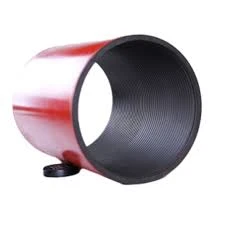- Afrikaans
- Albanian
- Amharic
- Arabic
- Armenian
- Azerbaijani
- Basque
- Belarusian
- Bengali
- Bosnian
- Bulgarian
- Catalan
- Cebuano
- Corsican
- Croatian
- Czech
- Danish
- Dutch
- English
- Esperanto
- Estonian
- Finnish
- French
- Frisian
- Galician
- Georgian
- German
- Greek
- Gujarati
- Haitian Creole
- hausa
- hawaiian
- Hebrew
- Hindi
- Miao
- Hungarian
- Icelandic
- igbo
- Indonesian
- irish
- Italian
- Japanese
- Javanese
- Kannada
- kazakh
- Khmer
- Rwandese
- Korean
- Kurdish
- Kyrgyz
- Lao
- Latin
- Latvian
- Lithuanian
- Luxembourgish
- Macedonian
- Malgashi
- Malay
- Malayalam
- Maltese
- Maori
- Marathi
- Mongolian
- Myanmar
- Nepali
- Norwegian
- Norwegian
- Occitan
- Pashto
- Persian
- Polish
- Portuguese
- Punjabi
- Romanian
- Russian
- Samoan
- Scottish Gaelic
- Serbian
- Sesotho
- Shona
- Sindhi
- Sinhala
- Slovak
- Slovenian
- Somali
- Spanish
- Sundanese
- Swahili
- Swedish
- Tagalog
- Tajik
- Tamil
- Tatar
- Telugu
- Thai
- Turkish
- Turkmen
- Ukrainian
- Urdu
- Uighur
- Uzbek
- Vietnamese
- Welsh
- Bantu
- Yiddish
- Yoruba
- Zulu
Understanding Tubing Crossovers and Their Applications in Oil and Gas Industry
Understanding Tubing Crossover in Oil and Gas Operations
In the oil and gas industry, efficient drilling and production processes are vital for maximizing output and minimizing costs. One key component that contributes to these processes is tubing crossover. This term, often encountered in the realm of oil and gas drilling, refers to specialized equipment and methods employed for the transition of fluids between different types of tubulars, such as casing and production tubing. Understanding tubing crossover is crucial for engineers, rig operators, and anyone involved in drilling operations.
What is Tubing Crossover?
Tubing crossover is essentially a mechanical connection designed to allow easy and efficient communication between different sections of wellbore equipment. It encompasses various designs and configurations, including crossover tools and fittings, which facilitate the flow of fluids, such as oil, gas, and water, through the tubing system.
There are two main scenarios where tubing crossover is commonly utilized during production operations and in well intervention processes. In production, tubing crossover provides a passage for produced fluids from the reservoir up to the surface. In well intervention, crossover enables the use of specialized tools and equipment to access and repair tubing without having to pull the entire production string.
Importance of Tubing Crossover
The integrity and efficiency of the tubing crossover system play a crucial role in the overall productivity of a well. Several reasons highlight the importance of this equipment in oil and gas operations
1. Fluid Management Tubing crossovers allow for effective management of various fluids involved in the drilling and production processes. By facilitating the circulation of drilling mud, production fluids, and even chemicals for enhanced oil recovery, crossovers help maintain optimal well performance.
2. Pressure Control The design of tubing crossovers often includes features that enable precise control over the pressure within the wellbore. This is critical for preventing blowouts and ensuring safe operations. Proper pressure management is essential for maintaining the stability of the reservoir and avoiding catastrophic failures.
3. Versatility Tubing crossovers are designed to work with different types of tubulars, making them versatile for various applications. They can be used in environments with varying pressures, temperatures, and fluid characteristics, adapting to the specific needs of the well.
4. Cost-Effectiveness Utilizing tubing crossover effectively can lead to significant cost savings. By streamlining operations and minimizing downtime during drilling and production, operators can achieve better economic outcomes. A well-designed crossover system can reduce the need for extensive repairs and interventions, which can be both time-consuming and costly.
Types of Tubing Crossovers
tubing crossover

Tubing crossovers come in various configurations, each tailored to meet specific operational needs. Some common types include
- Standard Crossovers These are basic versions used to connect different sizes of tubing and casing, facilitating fluid movement without significant pressure loss.
- Specialty Crossovers Designed for unique applications, these may include features like valves or monitoring systems to regulate flow and pressure more effectively.
- Subsea Crossovers Used in offshore drilling, these are engineered to withstand the harsh conditions of deep-water environments, ensuring safe and reliable operation.
Best Practices for Tubing Crossover Use
To ensure the effective use of tubing crossovers, operators should adhere to best practices, including
- Regular Inspection Consistent checking of crossover components for wear and tear can help prevent failures during operations.
- Proper Installation Ensuring that tubing crossovers are installed according to manufacturer specifications is critical for maintaining integrity and efficiency.
- Responsive Maintenance Addressing issues as they arise, such as leaks or pressure anomalies, can prevent more significant problems down the line.
Conclusion
In summary, tubing crossover is a fundamental aspect of oil and gas operations that significantly impacts efficiency and productivity. By facilitating the transfer of fluids, managing pressure, and providing versatility, tubing crossovers contribute to smoother and safer drilling and production processes. As technology advances, the designs and applications of tubing crossovers are likely to evolve, further enhancing their effectiveness in the ever-demanding landscape of the energy sector. Understanding the intricacies of tubing crossover will empower professionals in the field to optimize their operations and drive success in their projects.
-
Tubing Pup Joints: Essential Components for Oil and Gas OperationsNewsJul.10,2025
-
Pup Joints: Essential Components for Reliable Drilling OperationsNewsJul.10,2025
-
Pipe Couplings: Connecting Your World EfficientlyNewsJul.10,2025
-
Mastering Oilfield Operations with Quality Tubing and CasingNewsJul.10,2025
-
High-Quality Casing Couplings for Every NeedNewsJul.10,2025
-
Boost Your Drilling Efficiency with Premium Crossover Tools & Seating NipplesNewsJul.10,2025







